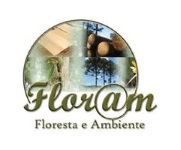PRODUCTION MODELS FOR BIOENERGY-POPLAR PLANTATIONS ON FARMLAND IN SWEDEN
03 - Bioenergy: Economy, Market and Policy
 1 BIRGER HJELM, 2 TORD JOHANSSON
1 BIRGER HJELM, 2 TORD JOHANSSON
1 DEPT. OF CROP PRODUCTION ECOLOGY - SWEDEISH UNIVERSITY OF AGRICULTURAL SCIENCES
2 DEPT. OF ENERGY AND TECHNOLOGY - SWEDISH UNIVERSITY OF AGRICULTURAL SCIENCES
Interest in utilizing trees for bioenergy production has increased drastically in recent decades. Poplars (Populus spp.) are an exotic group of species in Sweden. Hybrid poplar plantations with short rotation (≤ 20 years) established on farmland in south and central Sweden, have shown promising production and been in focus as a future potential bio-fuel feedstock. Results from 20-year-old poplar plantations show a total production of up to 300 t d.w. ha-1. Mean annual volume production is on average around 20-25 m3. Taper, biomass- and volume models were developed for individual poplar trees. One model was developed for biomass estimations of individual stumps (incl. roots) and another for biomass estimation of 2nd generation coppiced poplars. We have finally studied the properties of false heartwood of poplar stems. All models fitting data comes from harvested plantations in Sweden.1) Biomass and Volume models for individual Poplar trees: The developed biomass equation uses dbh (diameter at breast height, 1.3 m above ground) as independent variable and estimates the stem, twigs and leaf fractions separately or together. One equation with dbh (D) and total height (H) as independent variables were constructed for stem volume estimation (V) and compared with a number of published equations. 2) Biomass models for Poplar stumps and 2nd generation coppices: There are two ways to manage the remaining stumps after harvest: 1) Excavation, or 2) Management of sprouts established on stumps. Models for estimation of individual stumps and coppice biomass were developed. Biomass production of 1000 excavated stumps could be 45-50 t d.w. ha-1. The stump was 74% on average of the total stump-root biomass. Roots (>50 mm) made up the remaining 26%. Biomass of 7-year-old coppices on 1000 stumps could be 30-35 t d.w. ha-1. 3) Taper model for individual Poplar trees: Taper models estimate diameter (d) using DBH, corresponding height (h) and total height (H) as independent variables and are useful for estimating properties of different assortments with mini diameter restrictions. The objective was to develop a simple taper equation with good ability to predict diameter at a given height and compare it with common published taper equations. 4) Models for prediction of false heartwood properties in Poplar stems: All of the sampled stems contained false heartwood. At 0 – 50 % of stem height, all sampled trees were discolored and at 90 % of stem height, 33 % were discolored. The percentage of false heartwood area by stem area was highest at 1 % and 10 % of stem height (26.6 % and 24.7 % respectively). Equations were constructed describing the correlation between diameter at breast height and the diameter of false heartwood at different stem heights aimed for stems to be used for construction. However, most of the fast-growing poplars in Sweden is expected to be harvested as biofuel.
Keywords: populus; bioenergy; forest production, volume and biomass models
Acknowledgments: This work acknowledges all the people that has carried out the time consuming and hard work to collect the field data for this study, especially to mention is Mr. Jonas Johansson and Mr. Lars Hedman.

























